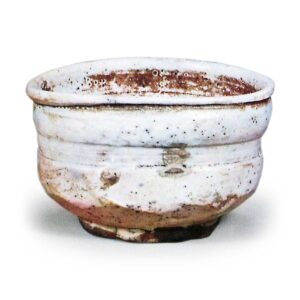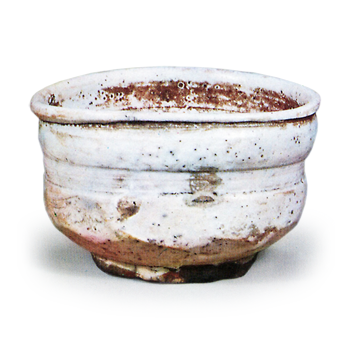
The Goshomaru tea bowl is the earliest example of this type, and was designed by Furuta Oribe and fired at the Gimhae kiln near Busan. The name “Goshomaru” is said to have come from the name given to the ships used for trade with Korea in the old days, and from the legend that Shimazu Yoshihiro had this type of tea bowl fired in Korea during the Bunroku Keicho War (1592-8) and presented it to Hideyoshi in trust. The clay of Gimhae is a semi-polished, well-fired grayish-white clay, as can be seen in the Gimhae hard-tea bowls, and is characterized by light red spots floating on the skin, which is also evident in the Goshomaru bowls. The shape is typical of Oribe’s taste, a kutsu-shape, with a ball-rimmed mouth, a tight body, and a sharply stretched waist, with a sharp spatula called a tortoiseshell spatula on the waist. The base is large, and the spatula is cut into a pentagonal or hexagonal shape. It can be said that this bowl is exactly the same as the Oribe tea bowl of Japanese ceramics. There is a Goshomaru bowl that is painted with black iron sand on its white surface, which is called Goshomaru Kurohake, and it is clearly a sibling to the black Oribe bowl. The one that came from the Konoike family is the only exception that is called Furuta Korai even though it is a white tea bowl because of its inheritance, and the term “Furuta Korai” generally refers to a hand with black brushes. This is probably because it is very close to black Oribe.



